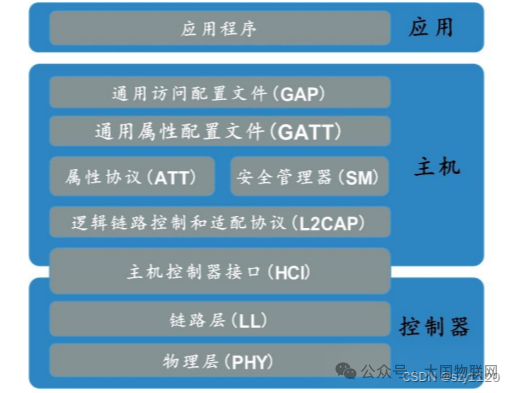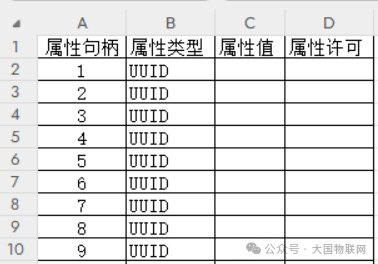Attributes play a crucial role in BLE, serving as a bridge between different components. Today, let’s learn about the concept of attributes.
The architecture of BLE is divided into servers and clients.
The way BLE works is by storing data on the server, which the client can access. Data is stored in a format similar to a database or a table.
An attribute is a unit of data stored in the BLE server.
Each attribute consists of four values:Attribute Handle, Attribute Type, Attribute Value, Attribute Permission.

Each row represents an attribute,Attribute = this piece of data.
Attribute Handle: The index of this piece of data, similar to a serial number at the beginning of a table. The handle can be seen as this serial number, starting from1, with a maximum value of 65,535. Data is located using this serial number.
Attribute Type: The type of this piece of data, which can be understood as indicating what this data is used for. This 2-byte or 16-byte data representing the attribute type is the UUID.
UUID (Universally Unique Identifier): A globally unique identifier:
Why is it 2 bytes or 16 bytes?
The complete UUID is 16 bytes. To improve transmission efficiency, the Bluetooth Special Interest Group(SIG) defined a “Bluetooth UUID base” of 16-byte universally unique identification code, combined with a shorter 2-byte number for use. When transmitting commonly used UUIDs, only the shorter 2-byte version is sent, and the recipient can complete it with the Bluetooth UUID base.
The Bluetooth UUID base is:
0000-0000-0000-1000-8000-0080-5F9B-34FB
To send a 2-byte identification code xxxx, the complete 128b UUID is:
0000-xxxx-0000-1000-8000-0080-5F9B-34FB
Attribute UUIDs are classified by the Bluetooth standards organization:
0x1800-0x26FF: Used to identify the service class’s universally unique identifiers. Common service classes: such as 0x1812 representing HOGP (HID Over GATT Profile), 0x1802 representing heart rate, and 0x180F representing battery service.
0x2700-0x27FF: Used to identify measurement units.
0x2800-0x28FF: Used to differentiate attribute types. For example, 0x2800 indicates a primary service, and 0x2803 indicates this piece of data is a characteristic.
0x2900-0x29FF: Used as characteristic descriptions, providing subscription functions.
0x2A00-0x7FFF: Used to differentiate characteristic types. For example, 0x2A00 represents the device name, and 0x2A19 represents battery level.


